The AMD Ryzen 3 1300X and Ryzen 3 1200 CPU Review: Zen on a Budget
by Ian Cutress on July 27, 2017 9:30 AM EST- Posted in
- CPUs
- AMD
- Zen
- Ryzen
- Ryzen 3
- Ryzen 3 1300X
- Ryzen 3 1200
Grand Theft Auto
The highly anticipated iteration of the Grand Theft Auto franchise hit the shelves on April 14th 2015, with both AMD and NVIDIA in tow to help optimize the title. GTA doesn’t provide graphical presets, but opens up the options to users and extends the boundaries by pushing even the hardest systems to the limit using Rockstar’s Advanced Game Engine under DirectX 11. Whether the user is flying high in the mountains with long draw distances or dealing with assorted trash in the city, when cranked up to maximum it creates stunning visuals but hard work for both the CPU and the GPU.
For our test we have scripted a version of the in-game benchmark. The in-game benchmark consists of five scenarios: four short panning shots with varying lighting and weather effects, and a fifth action sequence that lasts around 90 seconds. We use only the final part of the benchmark, which combines a flight scene in a jet followed by an inner city drive-by through several intersections followed by ramming a tanker that explodes, causing other cars to explode as well. This is a mix of distance rendering followed by a detailed near-rendering action sequence, and the title thankfully spits out frame time data.
There are no presets for the graphics options on GTA, allowing the user to adjust options such as population density and distance scaling on sliders, but others such as texture/shadow/shader/water quality from Low to Very High. Other options include MSAA, soft shadows, post effects, shadow resolution and extended draw distance options. There is a handy option at the top which shows how much video memory the options are expected to consume, with obvious repercussions if a user requests more video memory than is present on the card (although there’s no obvious indication if you have a low end GPU with lots of GPU memory, like an R7 240 4GB).
To that end, we run the benchmark at 1920x1080 using an average of Very High on the settings, and also at 4K using High on most of them. We take the average results of four runs, reporting frame rate averages, 99th percentiles, and our time under analysis.
For all our results, we show the average frame rate at 1080p first. Mouse over the other graphs underneath to see 99th percentile frame rates and 'Time Under' graphs, as well as results for other resolutions. All of our benchmark results can also be found in our benchmark engine, Bench.
MSI GTX 1080 Gaming 8G Performance
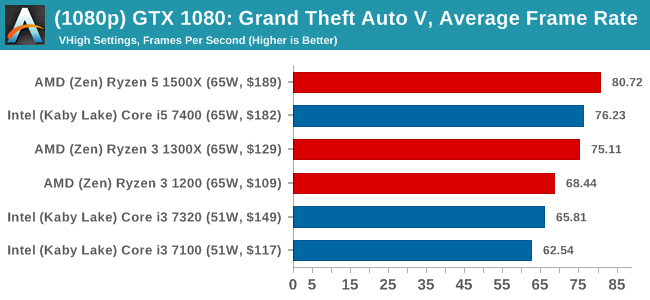
1080p

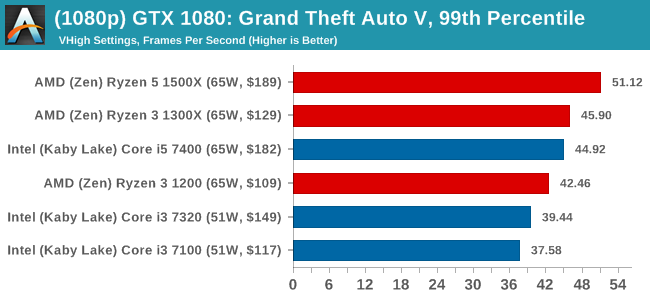
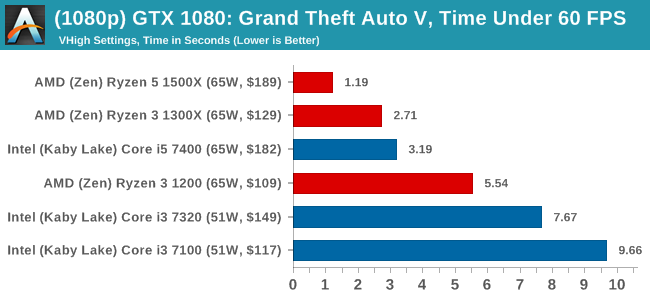
4K
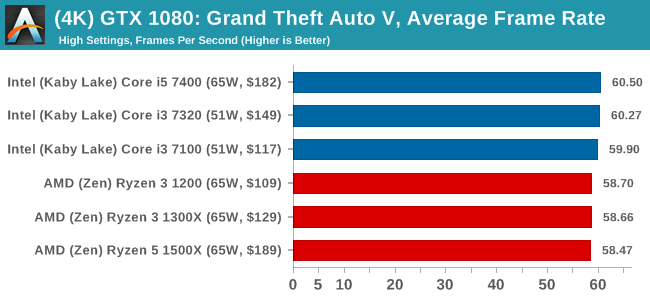
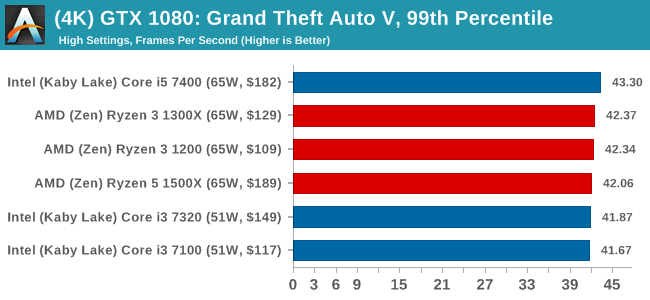
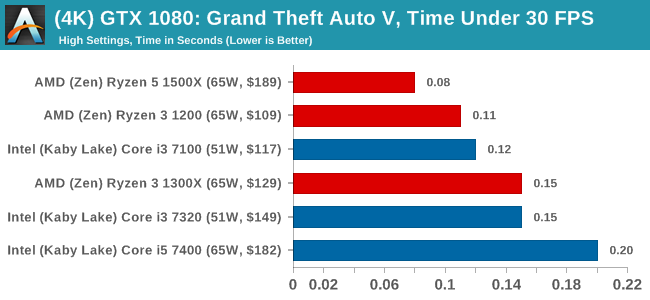
ASUS GTX 1060 Strix 6GB Performance
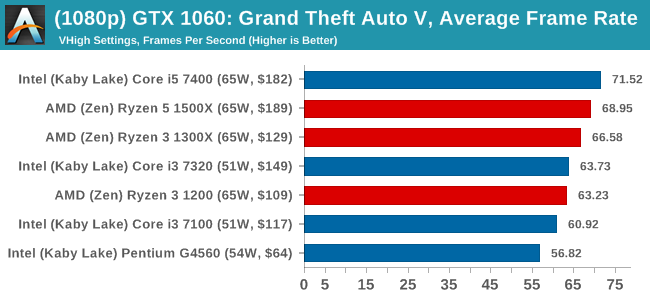
1080p

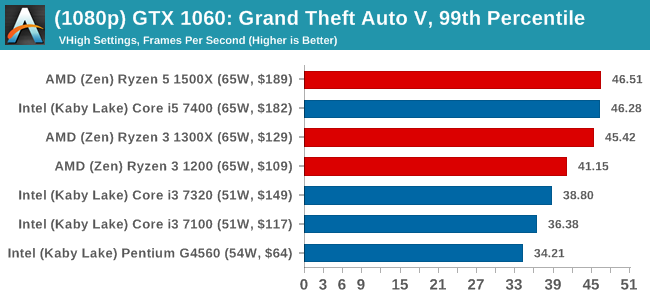
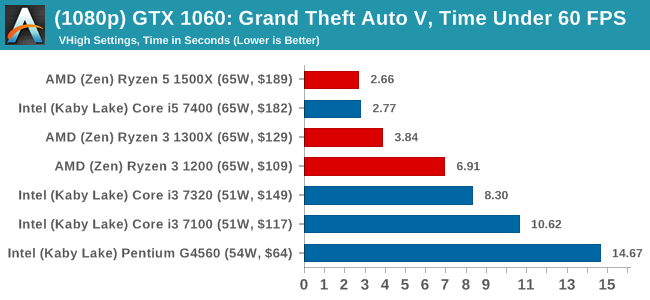
4K
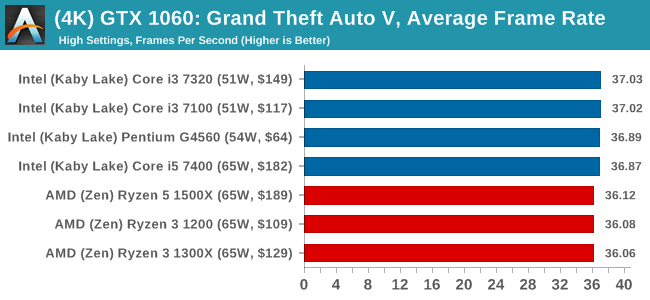

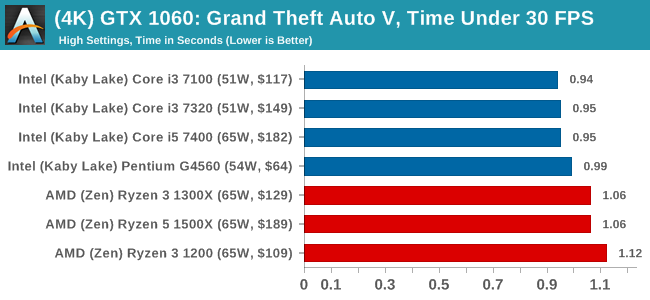
Sapphire R9 Fury 4GB Performance
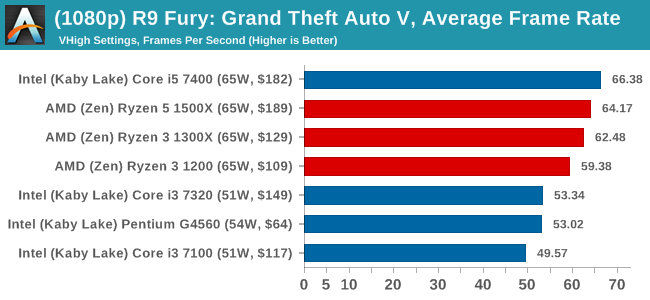
1080p

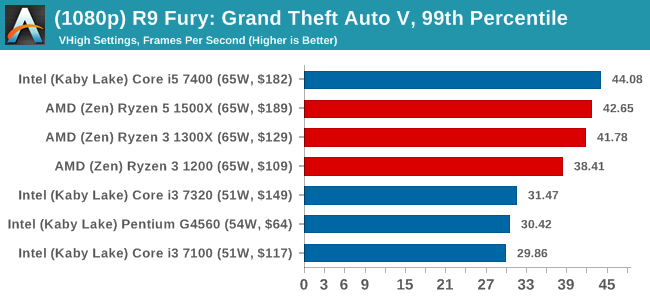
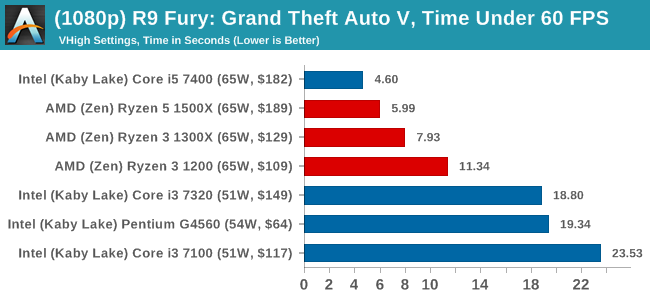
4K
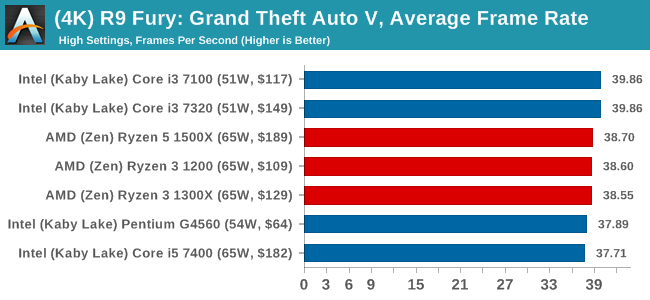
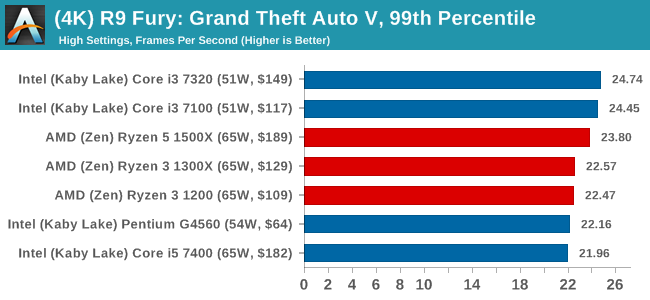

Sapphire RX 480 8GB Performance
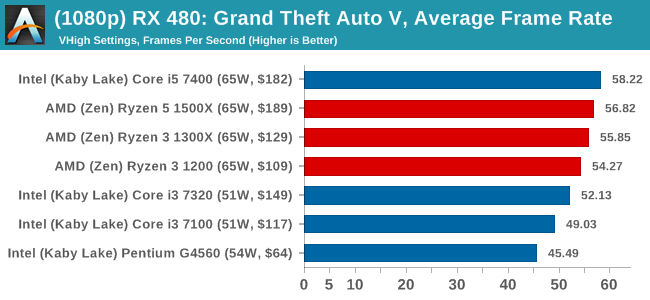
1080p

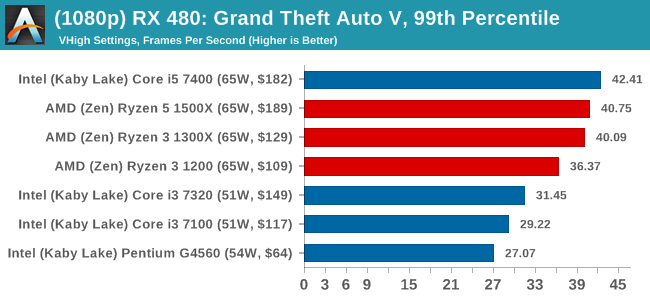
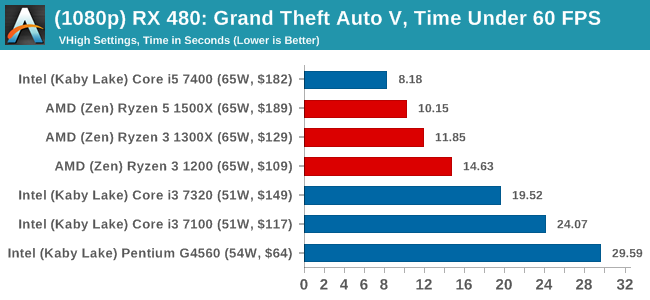
4K
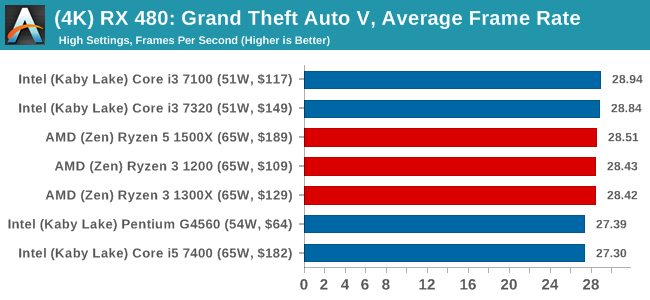
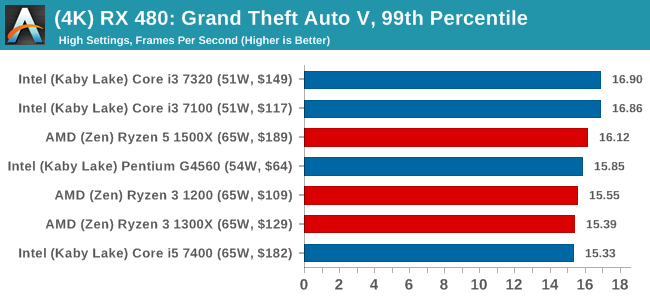
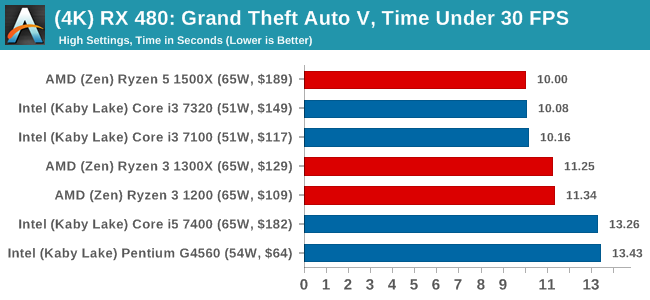













140 Comments
View All Comments
Ian Cutress - Thursday, July 27, 2017 - link
So one, overclocking is for a later review. Can't pass judgement on something that's not been tested. Other sites have certainly had more time (I get my chips 3-4 days after the US sites do, as I'm not in the US). This review was being written as the deadline passed, and is still being tested. It's not written it weeks in advance, with time to tooth comb and perfect every sentence. I've pulled an all-nighter to get to where it is now, even with some of the missing tests which are still being run. So when you say 'does not tell the full story', well not everything has been tested. I've made that abundantly clear several times in the review.Two, these chips are filling in volume at the lower end, especially in B2B where nothing is overclocked. You want me to sing the praises of a feature that we haven't had time to test for a product that's going to fill a market that won't use that feature, even though some in a different market might? If/when we get around to a pt2, I'll focus more on the enthusiast perspective. If you've read most of our CPU reviews over the past two years, most of the emphasis usually goes on out-of-the-box performance anyway.
Third, on the very first page, in black and white, it states 'The big upswing for AMD here is going to be overclocking, and potentially push the Ryzen 3 CPUs through to compete with the next one up the stack depending on stock performance.'
vanilla_gorilla - Thursday, July 27, 2017 - link
Ian, first off, great review as always and thank you. Second, you should just write up a large FAQ/disclaimer for your reviews that you can just link in the article and in comment replies. The same questions and complaints come up over and over, you've got to be tired of addressing them.DrKlahn - Thursday, July 27, 2017 - link
As I said, I understand it is for a later review. I also understand that a lot of these chips will never be overclocked. I don't want you to sing the praises of anything. I want a caveat in the conclusion that this potential exists and it impacts the value proposition. History has shown us (think the initial Radeon 290 reviews) that the first impression sticks with the reader regardless of how a product fares in the future. I have zero issues with your conclusion as an out of the box evaluation and appreciate your efforts. However your conclusion should have a caveat attached to it to call attention to everything the chip offers.mikato - Thursday, July 27, 2017 - link
I think that's fair. Here's another vote.Gothmoth - Thursday, July 27, 2017 - link
just saw your reply.... and i count on that. :-)Gothmoth - Thursday, July 27, 2017 - link
i hope anandtech will test the overcloked ryzen against the locked intels.but then... is amd paying enough fot advertising on anandtech..... :)
willis936 - Thursday, July 27, 2017 - link
There is an R7 review and now an R3 review but nothing on the most interesting segment: R5. I've seen multiple other sites say that the R5 segment is where AMD is the clear winner for all workloads. Go up or down $50 and Intel makes more sense for gaming.MrCommunistGen - Thursday, July 27, 2017 - link
http://www.anandtech.com/show/11244/the-amd-ryzen-...willis936 - Thursday, July 27, 2017 - link
I wonder why that doesn't show up when using anandtech's search feature.http://www.anandtech.com/SearchResults?q=R5
MrCommunistGen - Thursday, July 27, 2017 - link
This article doesn't show up when you search R3, and the 1800X article doesn't show up if you search R7.AMD isn't actually using R3, R5, and R7 as part of their branding for Ryzen, though I guess at least some are using that shorthand. The R3/5/7 are being used for GPU branding for some generations of discrete cards and APUs.
If you look at the top of the article underneath the author's name, you'll see what tags the article has (and thus search terms) that you could use to find it in the future. Looks like "Ryzen" or "Ryzen 3" "Ryzen 5" and "Ryzen 7" are good terms.
On the other hand, I found the link I posted above by going to Google and typing:
anandtech 1600x review